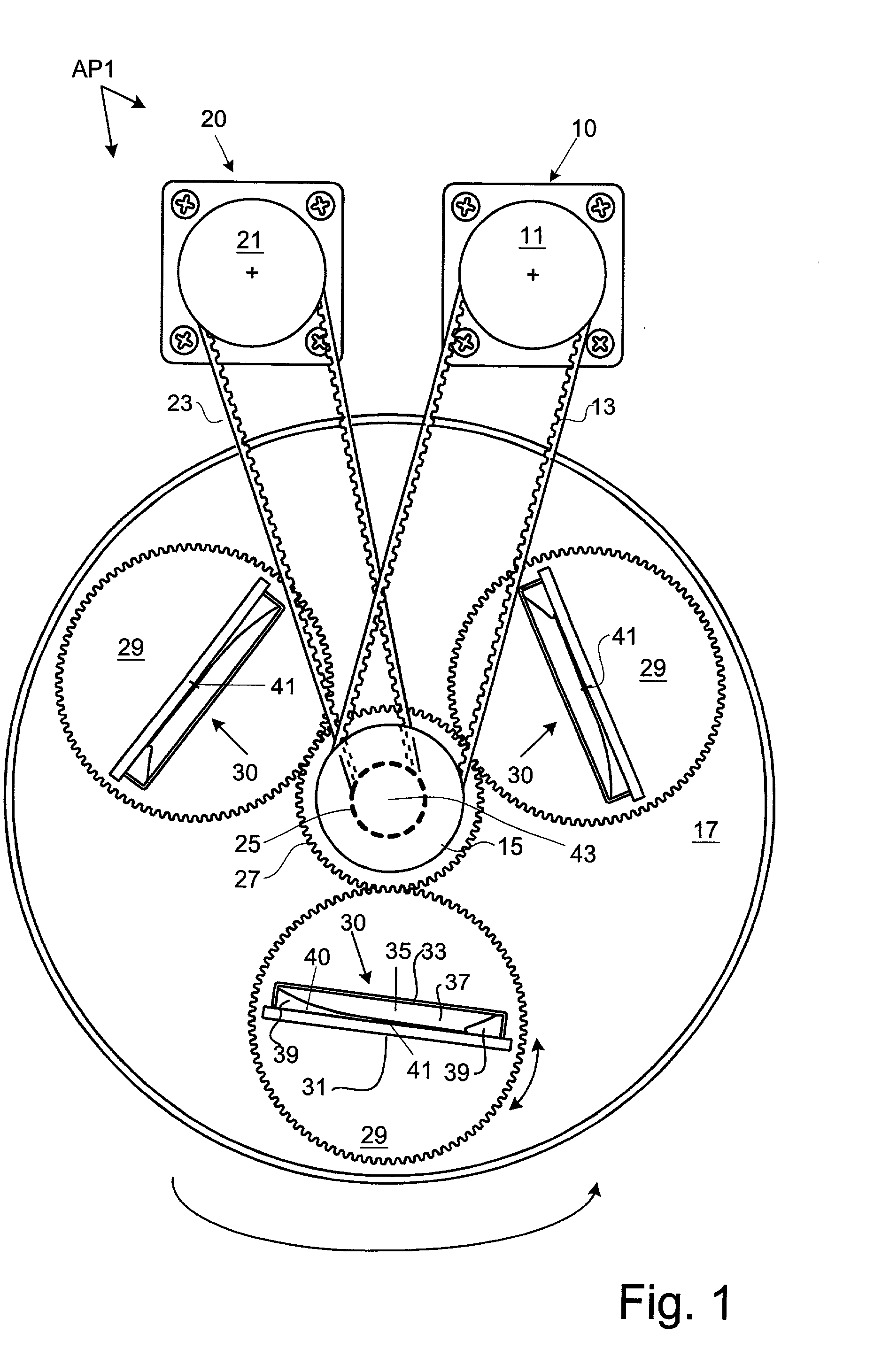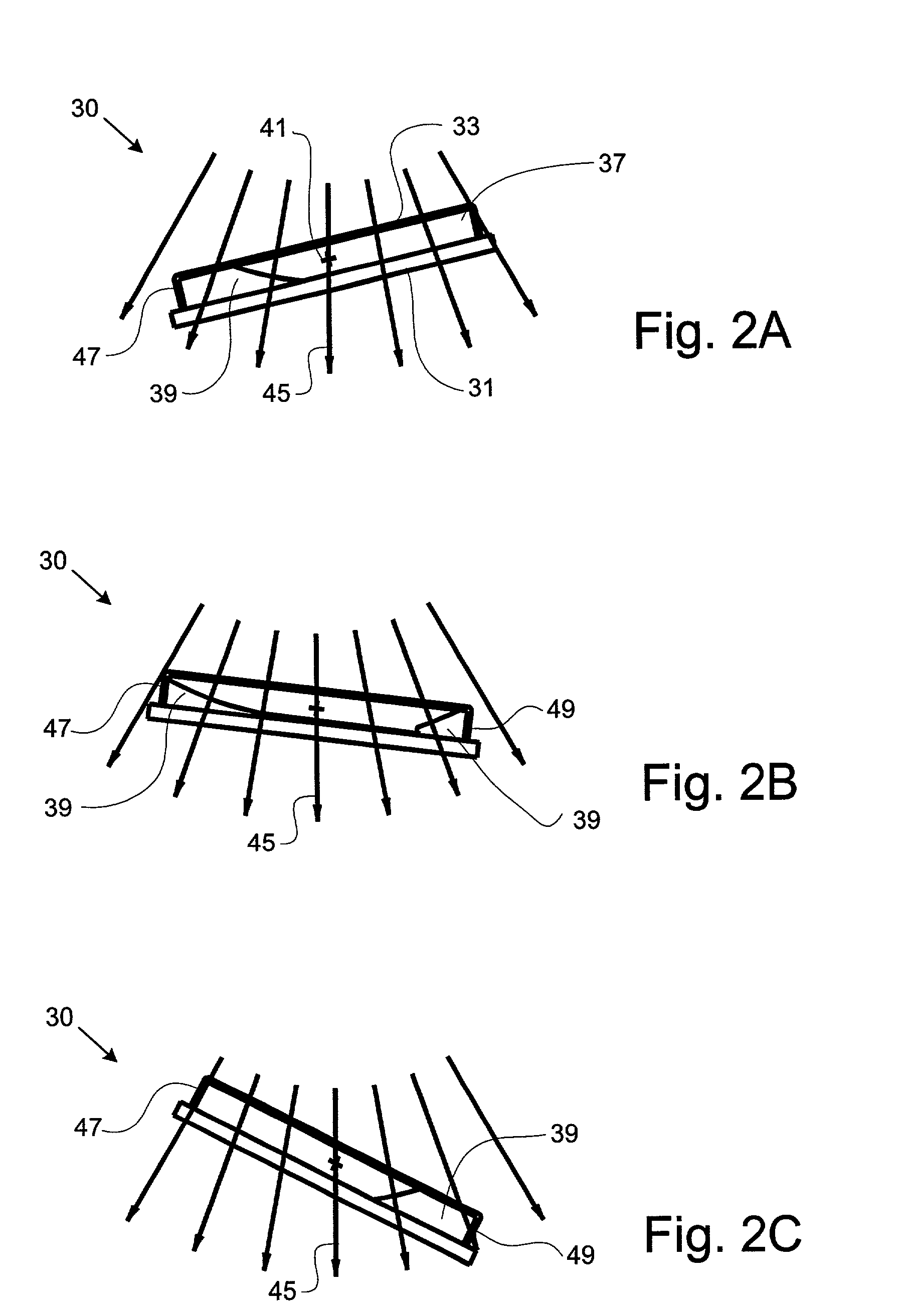Solid-phase chemical analysis using array hybridization facilitated by agitation during centrifuging
a technology of array hybridization and centrifugation, applied in the field of solid-phase chemistry, can solve the problems of poor hybridization kinetics, insufficient mixing, low efficiency, etc., and achieve the effect of high replenishment rate, effective tidal replenishment motion, and rapid hybridization
- Summary
- Abstract
- Description
- Claims
- Application Information
AI Technical Summary
Benefits of technology
Problems solved by technology
Method used
Image
Examples
Embodiment Construction
[0025]An array-hybridization system AP1 in accordance with the present invention is shown in FIG. 1. System AP1 comprises a centrifuge subsystem 10 and an agitation subsystem 20. Centrifuge subsystem 10 includes a centrifuge motor 11, a centrifuge drive chain 13, a centrifuge drive shaft 15, and a centrifuge rotor or “turntable”17. Agitation subsystem 20 includes an agitation-drive motor 21, an agitation-drive chain 23, an agitation-drive shaft 25, an agitation-drive gear 27, and three agitation-drive mounts 29. Agitation-drive mounts 29 are rotatably coupled to turntable 17. Each agitation-drive mount 29 holds a reaction cell 30.
[0026]Reactions cells 30 are similar so the following description of any one is representative. A reaction cell 30 includes a substrate 31 and a cover 33 so as to define a 2 cm×2 cm×0.25 mm interior volume or “reaction chamber”35. (In the figures, the thickness of reaction cell 30 is exaggerated for clarity.) During hybridization, this interior volume is pa...
PUM
| Property | Measurement | Unit |
|---|---|---|
| volumes | aaaaa | aaaaa |
| volumes | aaaaa | aaaaa |
| height | aaaaa | aaaaa |
Abstract
Description
Claims
Application Information
 Login to View More
Login to View More - R&D
- Intellectual Property
- Life Sciences
- Materials
- Tech Scout
- Unparalleled Data Quality
- Higher Quality Content
- 60% Fewer Hallucinations
Browse by: Latest US Patents, China's latest patents, Technical Efficacy Thesaurus, Application Domain, Technology Topic, Popular Technical Reports.
© 2025 PatSnap. All rights reserved.Legal|Privacy policy|Modern Slavery Act Transparency Statement|Sitemap|About US| Contact US: help@patsnap.com



